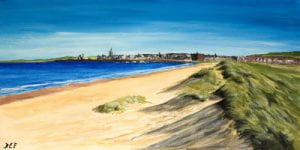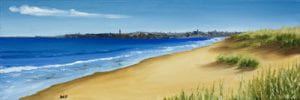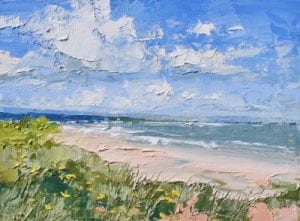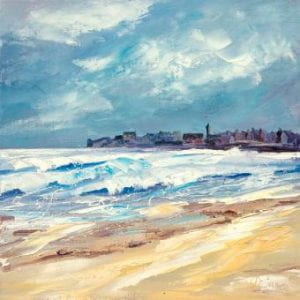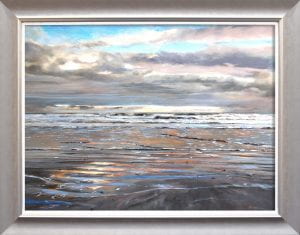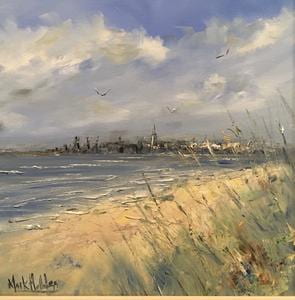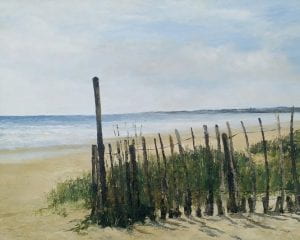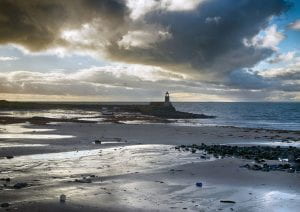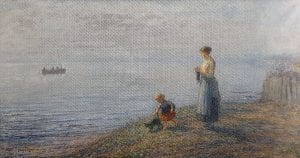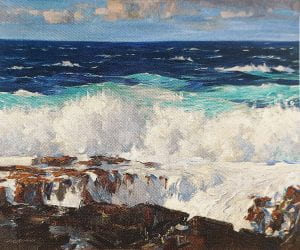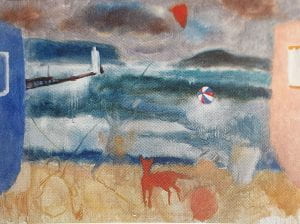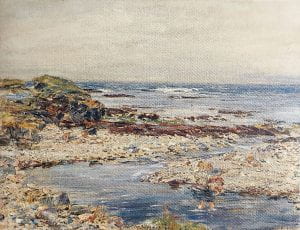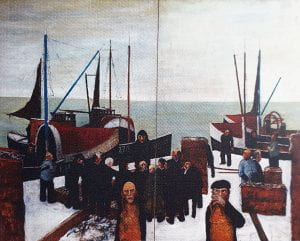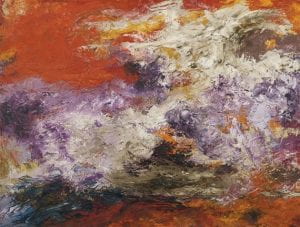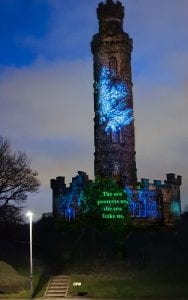The sea has been conceptualised in the western psyche, through myth, literature and art, as formless, wild and dangerous, romantically sublime. Yet this featureless void doesn’t resonate with people who live near the sea, as many people in Scotland do.
Our experiences of the sea are much more nuanced. I know how the little cold waves on Ayr’s flat sandy beach feel to a 4 year-old boy. I can still match my teenage fear of balancing up high with the thump of cold murky water on my chest after I’d jumped into a harbour from the pier. There are sharp sensory memories of being on the sea in a sailing dingy: sounds heard- the slap-slap of water against the hull, the deep creaking flap of sails, a tiller that thrums; odours smelled and movements felt. There are other memories of being ejected from the boat, flying and falling into cold deep water. Such experiences shape our consciousness and influence future behaviours.
I remember how the light winds of summer and the arctic blow of a winter storm felt decades ago on the West sands at St. Andrew’s, where I stood many times and faced the tide. Those experiences resurface whenever I hear the opening soundtrack of ‘Chariots of Fire‘.
Here are seven paintings of those West sands, ostensibly of the ‘same place’ (found through Google images). The last two though communicate more to me than the first five. Interesting that none of the artists has depicted a human being, and only some have included the town.
